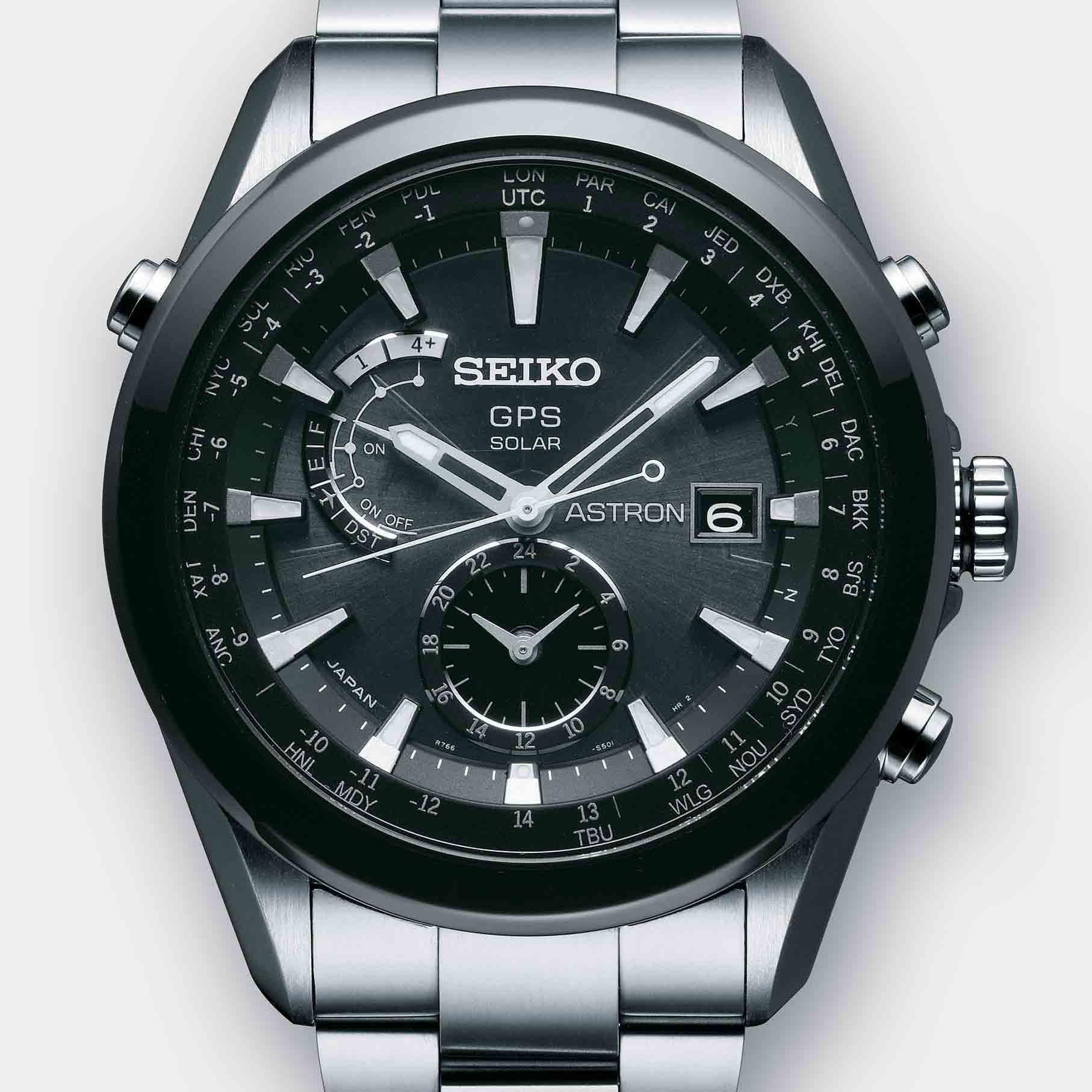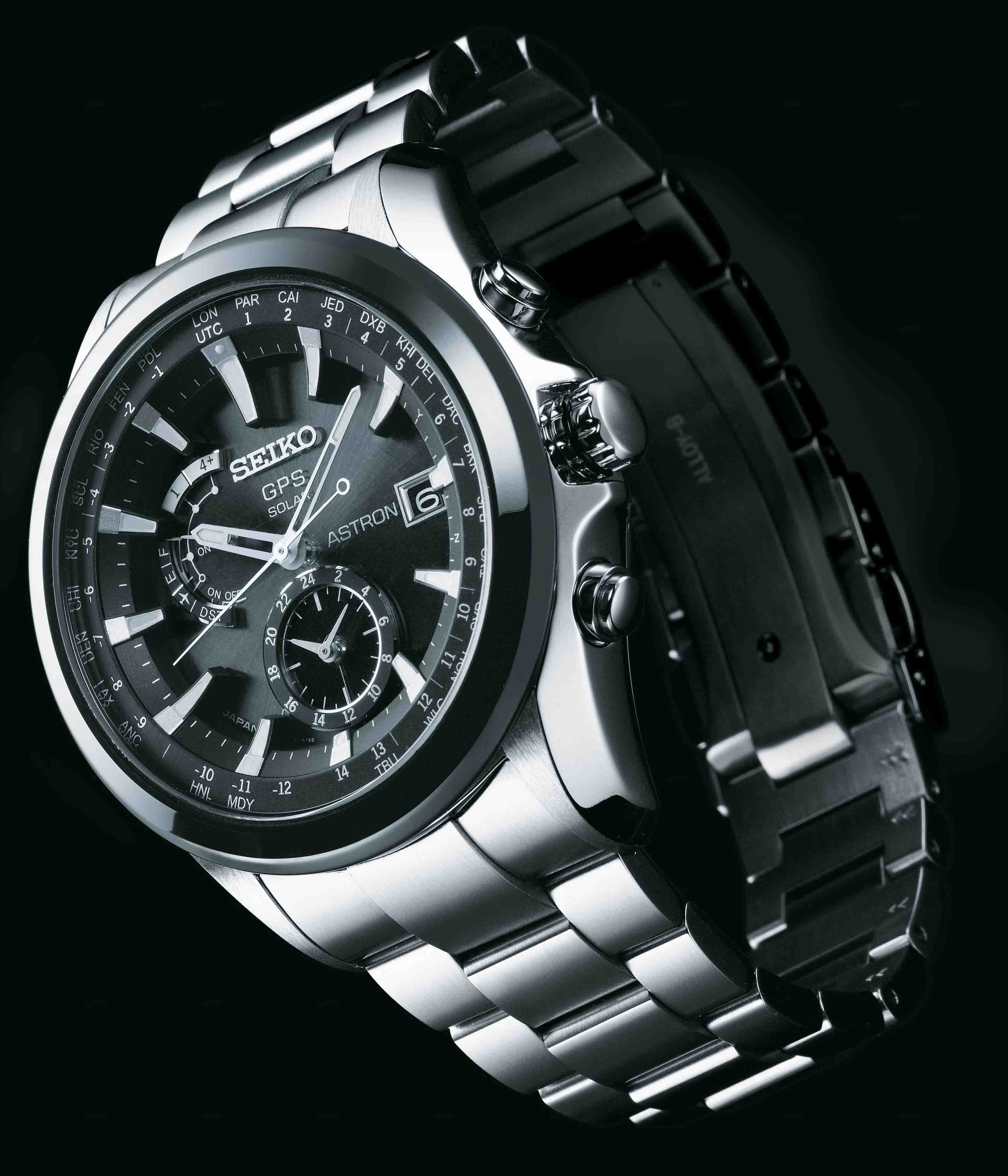
Seiko Astron GPS Solar
The new Seiko Astron is the world’s first GPS solar watch. It requires no external power source and is entirely self-sustaining. Using just the power of light, it connects to the GPS network, and tells time with atomic clock precision, adjusting at the touch of a button to all 39 time zones on earth. It took almost 10 years to create the new Seiko Astron and to package its advanced functionality in a watch that is beautiful to look at and comfortable to wear. Like its illustrious predecessor, the 1969 first quartz watch, the new Astron GPS Solar will change the way that the world tells time. To create Astron, Seiko developed several new technologies and over 100 patent applications have been filed. Only Seiko can deliver what the international traveler has long wanted, a watch that understands and adjusts to time zones. The advances that have turned Seiko Astron from dream to reality.
-The ultra-low consumption GPS module
In order for Astron to identify its location and maintain atomic clock precision, it must receive signals from at least four of the GPS satellites that orbit the Earth at a height of around 20,000 kilometers. The challenge was, of course, power; it was necessary to generate up to 10,000 times more power than needed in a standard quartz wristwatch, and about 200 times that of a radio controlled watch. After an R&D process that took six years, Seiko finally succeeded in developing a highly efficient GPS module especially designed for wristwatches which consumes about one-fifth of the electricity of a conventional GPS module.
-The high sensitivity ring-shaped antenna
Seiko designed an entirely new type of antenna to solve the twin problems of the conventional antenna: poor receptivity inside a metal casing and a size too large for a wristwatch. Seiko invented a highly sensitive ring-shaped antenna that can be stored on the outer part of the round wristwatch case. By placing the antenna under the dial ring, Seiko succeeded in enhancing its receptivity to the maximum degree, a characteristic that is further enhanced by the use of ceramic on the bezel, as this material is superior to metal in the reception of signals.
-The small & ultra-low consumption power source
Astron employs a new lithium ion secondary battery so small that it can easily fit into the watch case and its reliability is assured by a new IC that monitors and regulates the power charge and discharge to ensure the long life and safe operation of this rechargeable battery. This IC uses one tenth of the power consumed by mobile phone IC’s.


